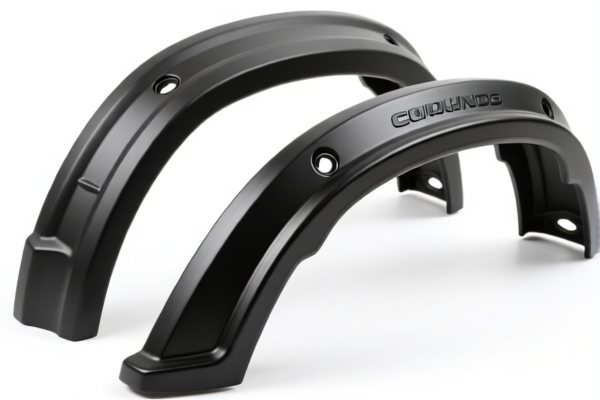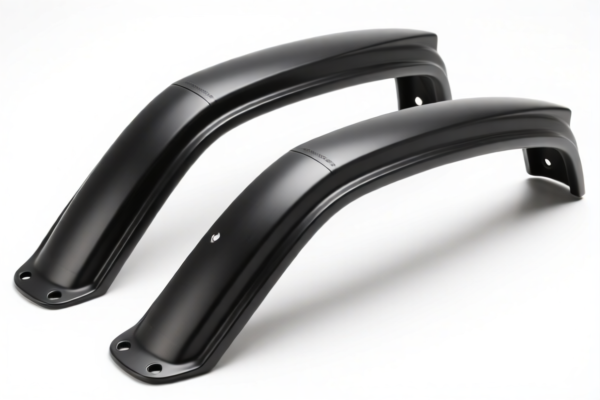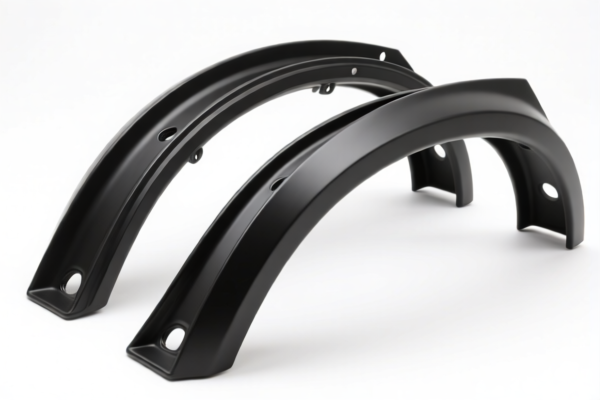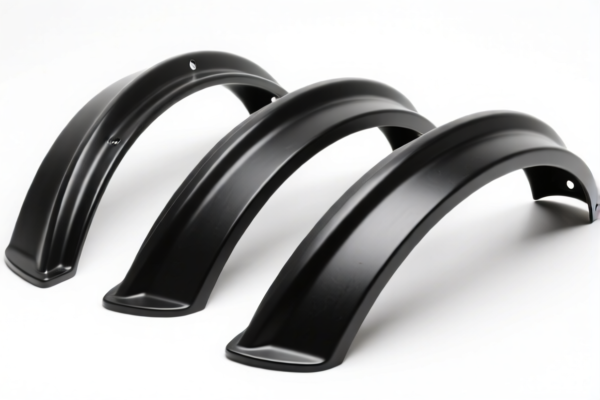| HS Code | Official Doc | Tariff Rate | Origin | Destination | Effective Date |
|---|---|---|---|---|---|
| 8712004800 | Doc | 66.0% | CN | US | 2025-05-12 |
| 8712005000 | Doc | 3.7% <u></u>+55.0% | CN | US | 2025-05-12 |
| 8714998000 | Doc | 47.5% | CN | US | 2025-05-12 |
| 3926909600 | Doc | 55.0% | CN | US | 2025-05-12 |
| 3926903000 | Doc | 59.2% | CN | US | 2025-05-12 |
| 3916100000 | Doc | 60.8% | CN | US | 2025-05-12 |
| 3916200010 | Doc | 60.8% | CN | US | 2025-05-12 |




Bicycle Fenders
Bicycle fenders, also known as mudguards, are protective coverings placed over the wheels of a bicycle to prevent spray from water, mud, and debris from being thrown up by the tires. They significantly improve riding comfort and protect the bicycle and rider from dirt and damage.
Material
Fenders are commonly constructed from the following materials:
- Plastic: Lightweight, inexpensive, and readily available. Often used on entry-level and mid-range bicycles. Less durable than metal options. Common types of plastic include polypropylene and ABS.
- Metal (Steel): Durable and provides excellent protection. Heavier than plastic. Often found on touring, commuting, and cyclocross bicycles. Requires painting or coating to prevent rust.
- Aluminum: Lightweight, corrosion-resistant, and stronger than plastic. More expensive than steel or plastic. Often used on higher-end bicycles.
- Carbon Fiber: Extremely lightweight and strong, but also the most expensive option. Used on high-performance road and gravel bicycles where weight savings are critical.
Purpose
- Protection from Spray: The primary purpose is to block water, mud, grit, and road debris from splashing onto the rider, clothing, and bicycle components.
- Component Protection: Protects the frame, drivetrain (chain, gears, derailleurs), and brakes from abrasive materials, reducing wear and tear and prolonging their lifespan.
- Visibility: Reduces the amount of spray kicked up, improving visibility for both the rider and those behind them, particularly in wet conditions.
- Comfort: Keeps the rider cleaner and drier, enhancing riding comfort.
Function
Fenders work by creating a barrier that deflects spray downwards and away from the rider and bicycle. Their effectiveness depends on several factors:
- Coverage: The amount of the wheel that is covered by the fender. Longer fenders provide more protection.
- Clearance: The gap between the tire and the fender. A smaller gap reduces spray, but can lead to clogging in muddy conditions.
- Mounting: Secure mounting is crucial to prevent rattling and ensure the fender stays in place during rides.
Usage Scenarios
- Commuting: Essential for riders who commute daily, especially in wet or dirty conditions.
- Touring: Protects the rider and bicycle during long-distance rides on varied terrain.
- Road Cycling: Used by riders who prefer to stay clean and dry, particularly in group rides.
- Cyclocross & Gravel Riding: Protects the rider from mud and debris on off-road courses.
- Mountain Biking: Less common, but can be used on some trail bikes for specific conditions.
Common Types
- Full Fenders: Provide maximum coverage, extending from the fork crown to the seat stays. Ideal for commuting and touring.
- Half Fenders: Cover only the upper portion of the wheel, offering some protection while being lighter and more aesthetically pleasing.
- Clip-On Fenders: Attach to the seat post or fork, providing minimal coverage but offering a quick and easy installation.
- Integrated Fenders: Built into the frame or fork, offering a sleek and aerodynamic design. Common on some e-bikes and gravel bikes.
- Down Tube Fenders: Small fenders that mount to the down tube, primarily used to protect the frame from spray.
- Rear Ducktail Fenders: A type of rear fender with an extended lip that provides additional protection from spray kicked up from the rear wheel.
Bicycle fenders are components attached to a bicycle to prevent mud, water, and debris from being thrown up by the wheels. They are typically made of plastic or other materials and are designed to improve riding comfort and protect the bicycle from corrosion.
The following HS codes from the provided reference material may be relevant:
- 8712004800: Other bicycles. This code covers a broad category of bicycles and could potentially include bicycles with pre-installed fenders.
- 87: Vehicles other than railway or tramway rolling stock; parts and accessories thereof.
- 12: Bicycles and other cycles (not motorized).
- 004800: Other bicycles.
- 8712005000: Other cycles. Similar to the above, this code covers other types of cycles and may include those with fenders.
- 87: Vehicles other than railway or tramway rolling stock; parts and accessories thereof.
- 12: Bicycles and other cycles (not motorized).
- 005000: Other cycles.
- 3926909600: Other articles of plastics and articles of other materials of headings 3901 to 3914: Other: Casing for bicycle derailleur cables; and casing for cable or inner wire for caliper and cantilever brakes, whether or not cut to length. While primarily for cables, this code covers “other” plastic articles and could potentially apply if the fenders are made of plastic and fall under this broad category.
- 39: Plastics and articles thereof.
- 26: Other articles of plastics and articles of other materials.
- 909600: Other: Casing for bicycle derailleur cables; and casing for cable or inner wire for caliper and cantilever brakes, whether or not cut to length.
According to the provided reference material, the HS code options related to 'bicycle fenders' are limited, with only the following 3 found.
It is important to note that the total tax rate for 8712004800 is 66.0%, comprising a base tariff of 11.0%, an additional tariff of 25.0%, and a further 30% after April 2, 2025. The total tax rate for 8712005000 is 55.0%, consisting of a base tariff of 3.7% and an additional tariff of 25.0%, increasing to 30% after April 2, 2025. The total tax rate for 3926909600 is 55.0%, consisting of a base tariff of 0.0% and an additional tariff of 25.0%, increasing to 30% after April 2, 2025.
Customer Reviews
No reviews yet.